Long haired cat breeds have a captivating look. They have elegant coats and a unique appearance that many pet owners love.
They also have different personalities, from gentle and loving to independent and adventurous.
We will explore the world of long-haired cat breeds and cover their history, coat types, characteristics, care needs, and myths.

Long haired cats have a long history that goes back to ancient times. Some of the first breeds, like the Turkish Angora and Persian, came from the Middle East.
Over time, people domesticated them in Europe and North America through trade and exploration. There, people bred them to create the variety of long haired breeds we see today.
Understanding Cat Breeds and Coat Types
Cat breeds can be grouped into natural, human-created, and hybrid.
Natural breeds evolved on their own, without human interference.
Human-created breeds came from selective breeding to get certain traits.
Hybrid breeds came from crossing two different species to combine their features.
A gene called FGF5 controls coat length in cats. It makes a protein that regulates hair growth. Cats with a mutated FGF5 gene have longer hair because the mutation affects the hair growth cycle and makes the hair longer. This is why long haired cats have such fluffy coats.
Coat length depends on genetics, but other things can affect it too. These include health, diet, and environment. Also, factors like temperature and humidity can change coat texture and quality.
The Main Long Haired Cat Breeds
1. Persian Cats
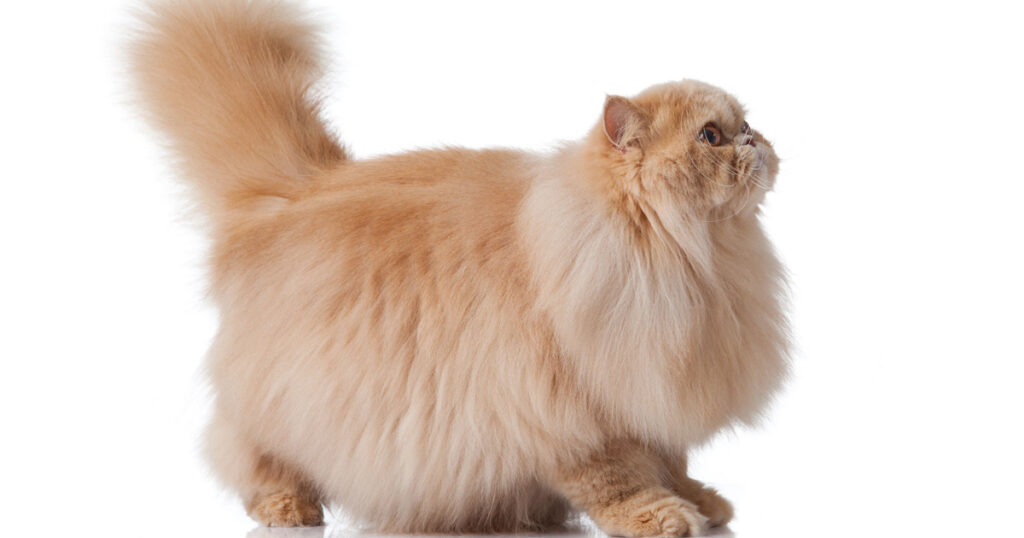
Persian cats are a long haired breed with flat faces, large eyes, and rich coats.
They came from Persia (now Iran) and came to Europe in the 1600s.
Persians are gentle and loving. They are great for people who like their beauty and don’t mind grooming them often.
2. Maine Coons

Maine Coons are one of the most giant domestic breeds, with males weighing up to 18 pounds or more.
They are called “gentle giants” because they are kind and easygoing.
They originate from Maine and have big bodies, tufted ears, bushy tails, and thick coats.
They can adapt to any situation and are lovely family pets.
3. Ragdolls

Ragdolls are a large breed with blue eyes and a soft, semi-long coat. They were created in the 1960s in California by Ann Baker.
They are named for their habit of going limp when held, like a ragdoll toy.
Ragdolls are calm and sweet. They act like puppies and love to follow their owners around.
They are perfect for families and get along with kids and other pets.
4. Norwegian Forest Cats
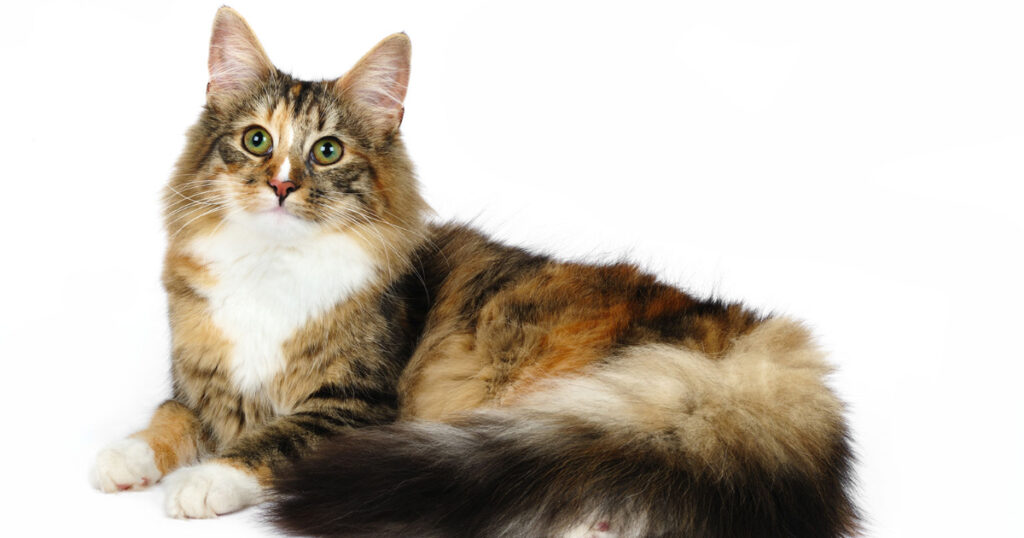
These cats come from Norway.
They have a thick coat that protects them from the cold. They are big and strong and can climb and jump very well.
They look tough and act independent. They like people but also need some space. They don’t ask for too much attention.
5. Siberian Cats
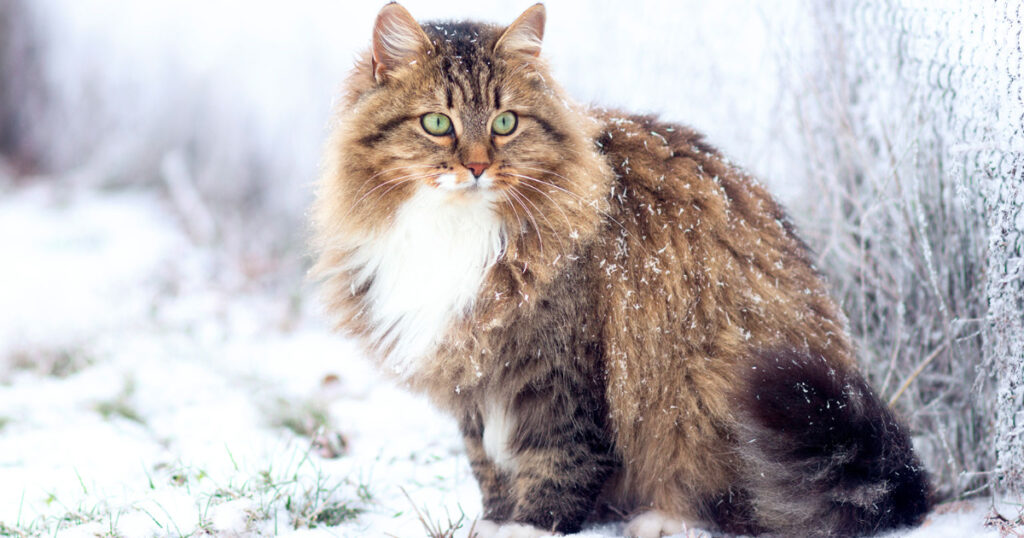
Siberians are a large, powerful breed from Russia.
They have long, thick fur and strong muscles. They can jump very high and love to play.
They are intelligent and loving and bond well with their families. They make great friends.
6. Turkish Angora
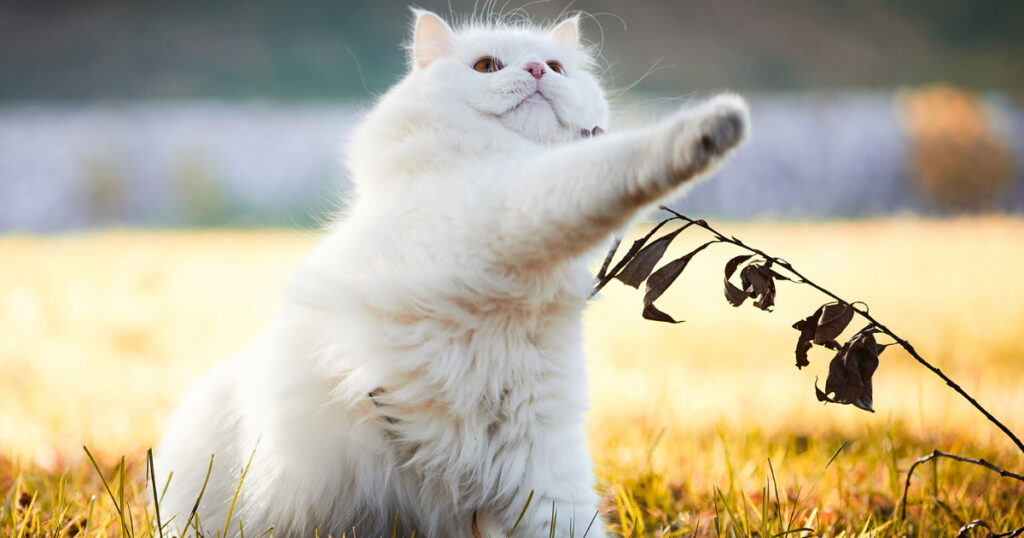
Turkish Angoras are an old breed from Ankara, Turkey.
They have long, smooth fur, big eyes, and slim bodies. They are brilliant and playful and like to explore.
They are loyal and caring to their humans and can be very protective of them.
7. British Longhair
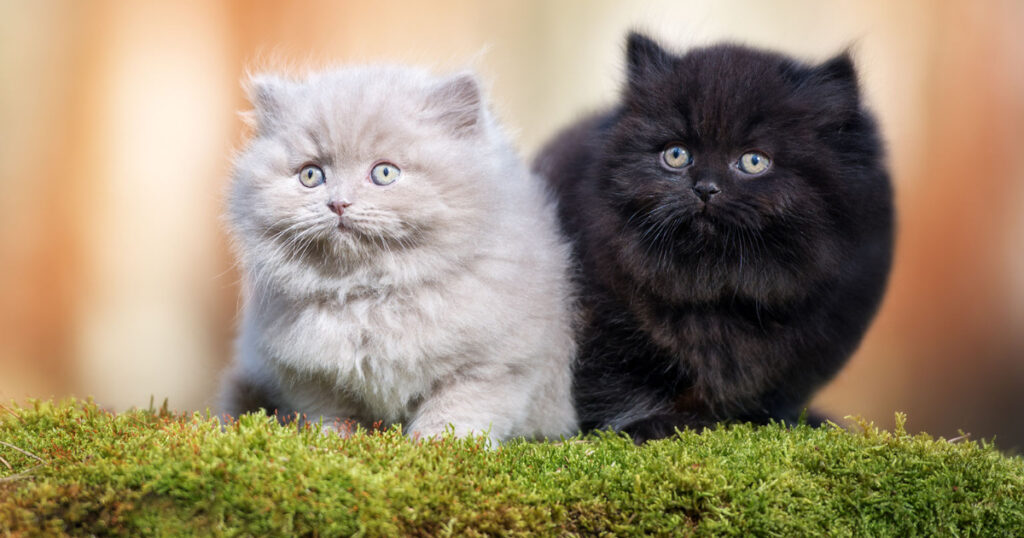
These cats are a new breed from crossing British Shorthairs with long haired breeds like Persians and Turkish Angoras.
They have a strong, muscular body and a thick, soft coat that makes them look like teddy bears.
British Longhairs are easygoing and loving cats that are great for families.
8. Himalayan Cats

Himalayan cats are a hybrid breed from crossing Persians with Siamese to get the color-point pattern of Siamese cats.
They have the long, silky coat and flat face of Persians and the blue eyes and color-point markings of Siamese.
Himalayans are gentle and affectionate cats that love being with their humans and make perfect lap cats.
9. Scottish Folds
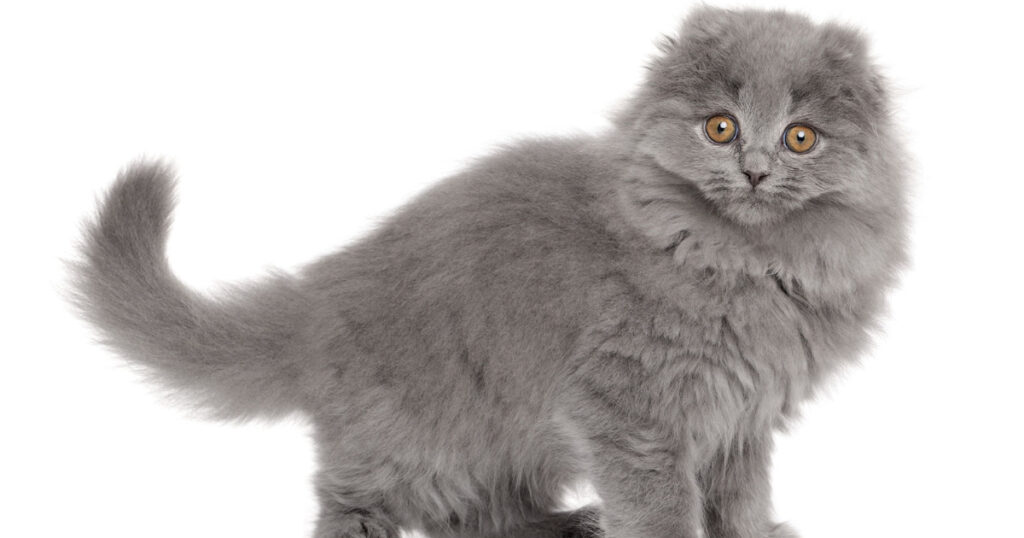
Scottish Folds are a cat breed with folded ears because of a genetic mutation.
They can have short or long hair, and the long haired ones are often called “Highland Folds.”
They are friendly and adaptable cats that get along with children and other pets.
They are calm and loving cats that make excellent companions for anyone.
10. Birman
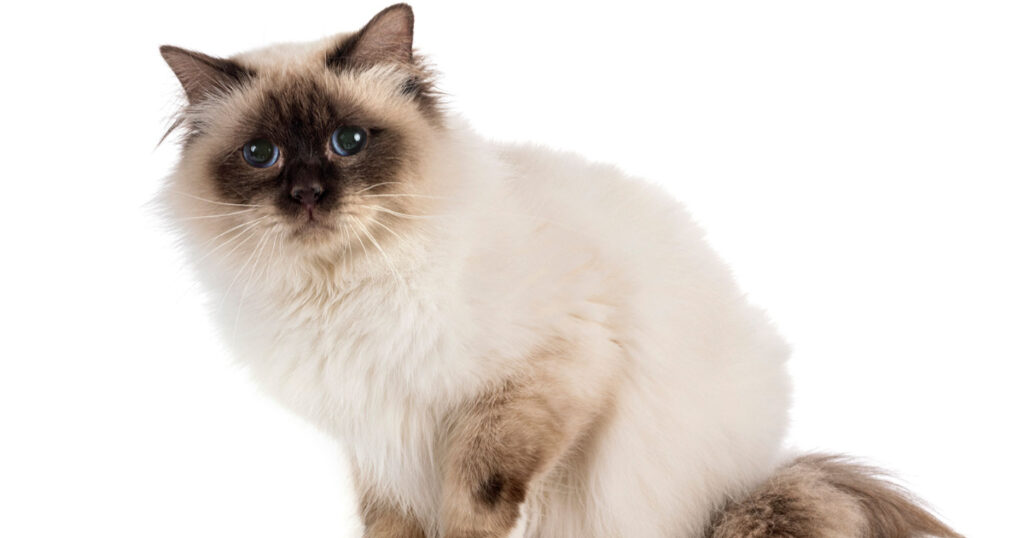
Birmans are a cat breed from Burma (now Myanmar). Buddhists in temples once thought they were sacred.
Birmans have blue eyes, color-point patterns, and soft, semi-long fur.
They are kind and loving cats that like being with people. They bond well with their families.
Caring for Long Haired Cat Breeds
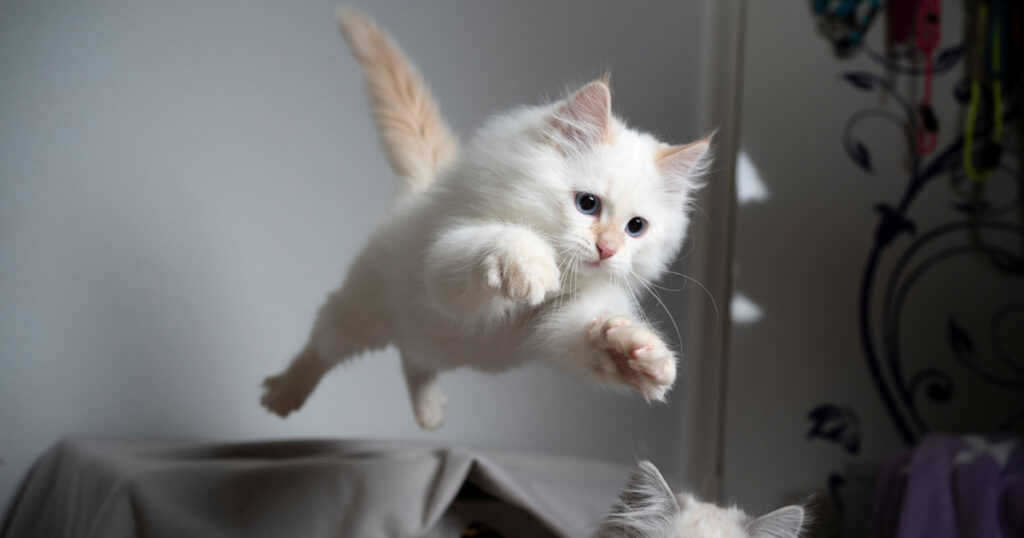
Long-haired cats need regular grooming to keep their coats healthy and free of tangles and mats.
This means brushing them daily with a comb or slicker brush to remove loose hair and prevent matting.
Bathing them every few months can also help keep their coats clean and shiny.
Trimming their nails regularly and cleaning their ears and teeth can help prevent health issues.
Long haired cats should eat a balanced, high-quality diet that meets their nutritional needs. It’s important to watch their calorie intake, as some breeds, such as the British Longhair and Birman, are prone to obesity.
Regular exercises, such as playtime with toys and climbing structures, can help keep long haired cats physically and mentally stimulated.
Like all cats, long haired cats need mental stimulation to keep them happy and healthy. This can be achieved through interactive playtimes like chasing toys or playing hide-and-seek.
Providing scratching posts, climbing structures, and other toys can also help keep them engaged and entertained.
Common Misconceptions About Long Haired Cats

Many people think that long haired cats cause more allergies than short haired cats. But this is not true. Cat allergies are caused by a protein in cat saliva and skin cells, not their fur.
They may have more dander because they have more fur. But with good grooming and cleaning, most people with allergies can live well with long haired cats.
Long haired cats need regular grooming, but this does not mean they are hard to care for. Grooming can be a way to bond with your cat and prevent health problems later on.
Adopting a Long Haired Cat

You can adopt a long haired cat from a shelter, a rescue group, or a breeder.
Make sure they care about their cats’ health and happiness. Ask questions and check their reputation before you decide.
Your home should be ready for your new cat. Give them food, water, litter boxes, scratching posts, and cozy beds.
Also, keep them safe from poisonous plants or wires they might chew on.
Conclusion
If you love cats with long fur, you have many breeds. Each one has its charm and personality.
Some are gentle and cuddly, like the Persian. Others are lively and adventurous, like the Siberian.
These furry friends need special care and attention. Knowing their needs and traits can make them happy and healthy.
Frequently Asked Questions (FAQs)
What are the hypoallergenic long-haired cat breeds?
Some long-haired cat breeds are less likely to cause allergies than others.
For example, Siberian and Balinese cats produce less dander, a common allergen.
How often should I groom my long-haired cat?
Long-haired cats need daily grooming to avoid mats and tangles in their fur.
They also benefit from regular baths and nail trims to stay healthy and happy.
What are the health issues common in long-haired cats?
Long-haired cats can develop some health issues, such as breathing problems, dental issues, and hip dysplasia.
These issues can be prevented by regularly taking them to the vet and caring for them properly.
Are long-haired cats more affectionate?
Long-haired cats can be affectionate, but their personality depends on many factors.
These include their breed, their temperament, and how they were socialized as kittens.
How can I determine if my cat is a long-haired breed?
Long-haired cats have long and thick coat that looks different from short-haired cats.
However, some breeds, like the Maine Coon, can have long and short-haired varieties.








